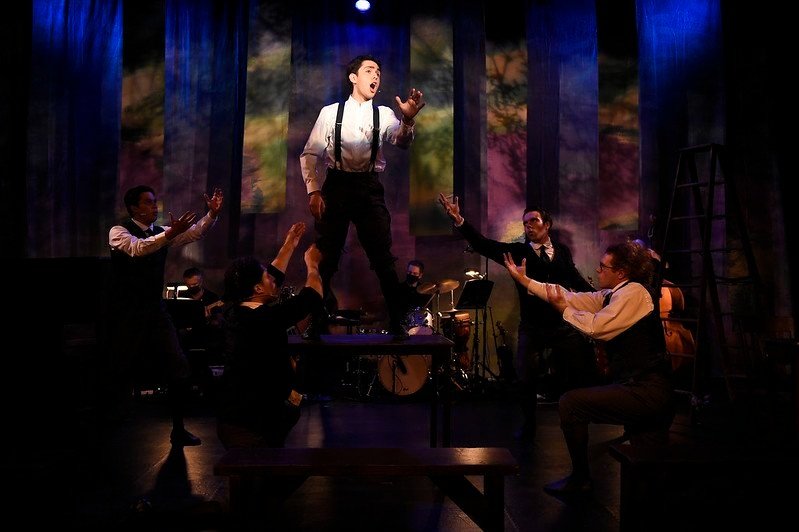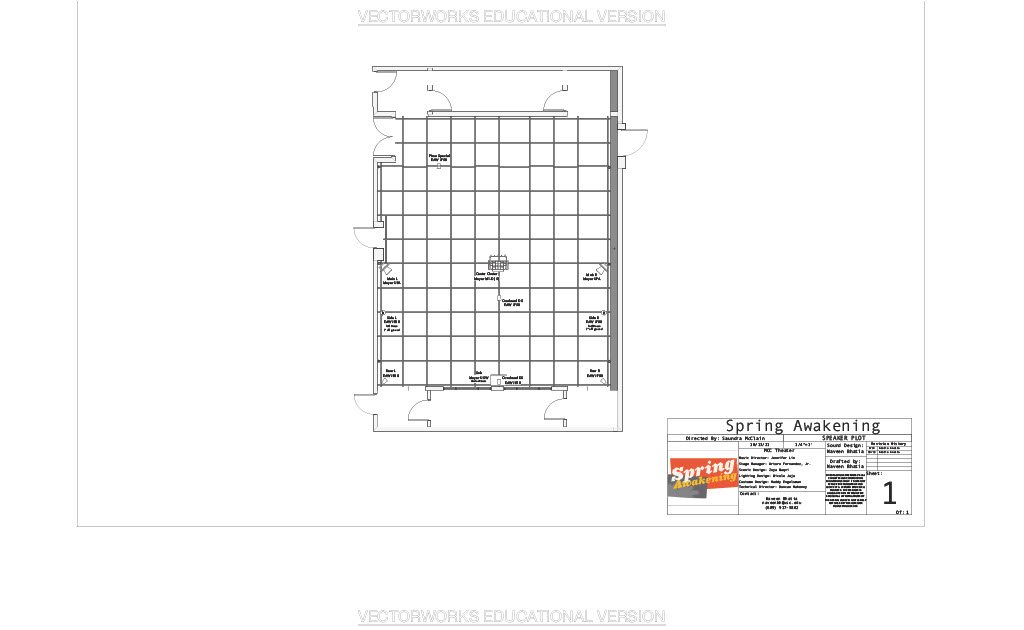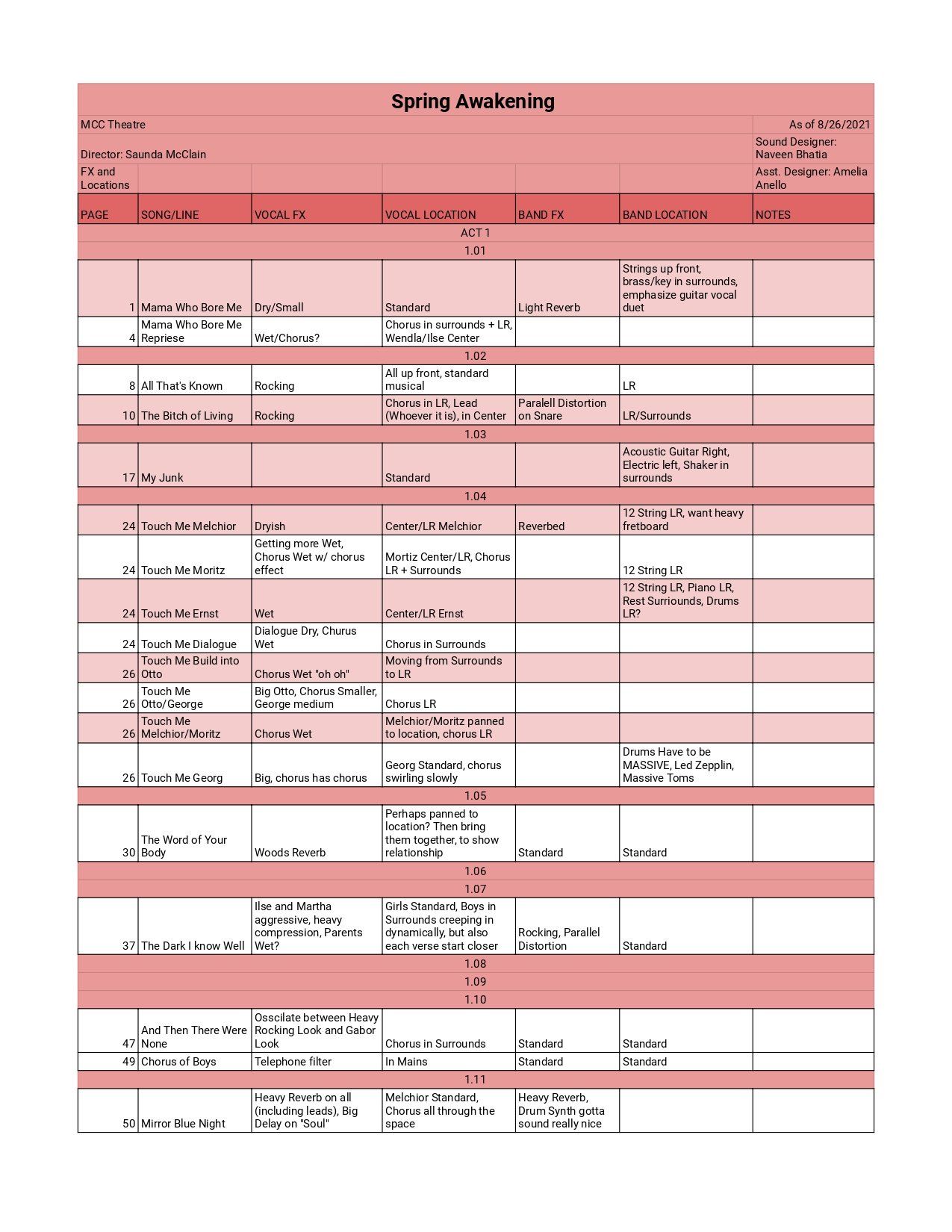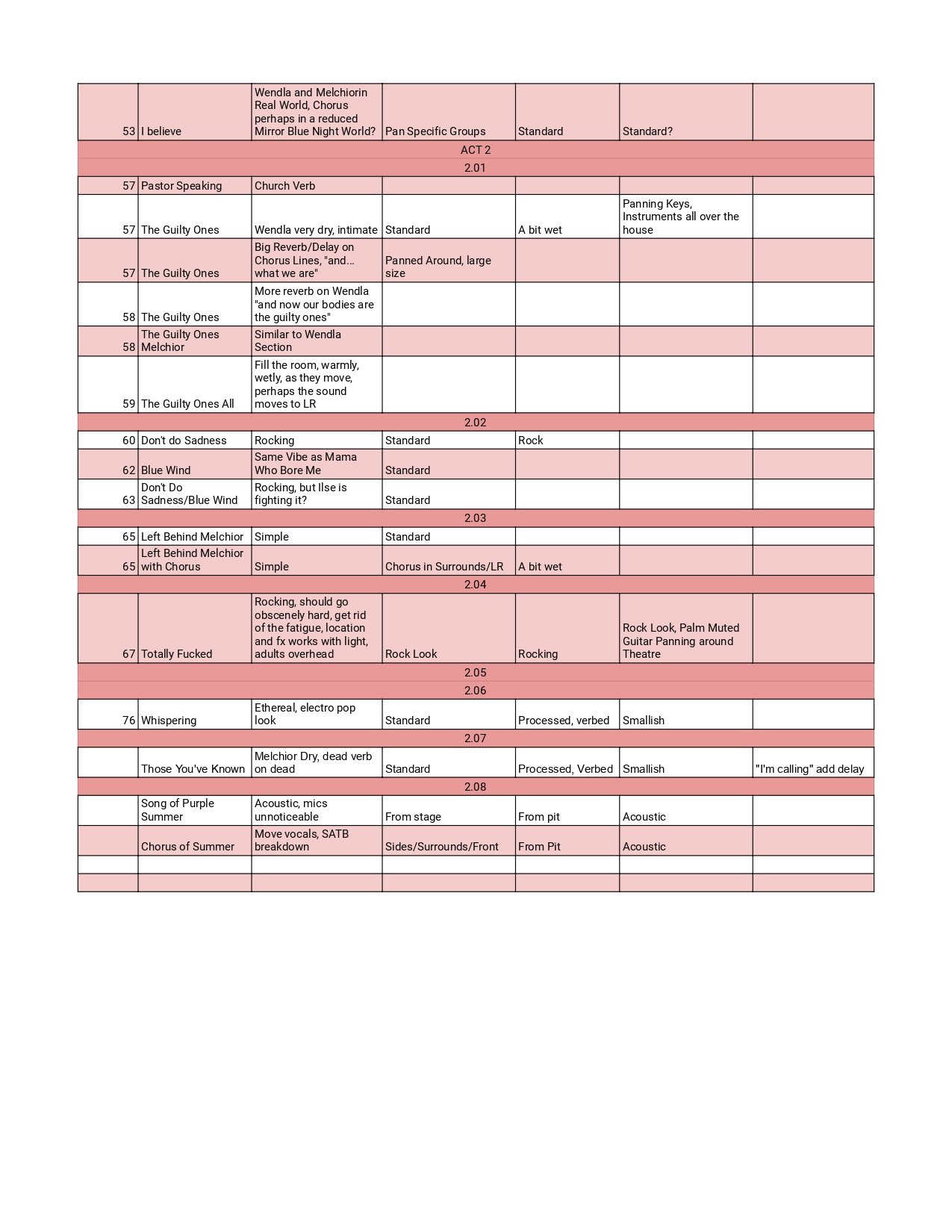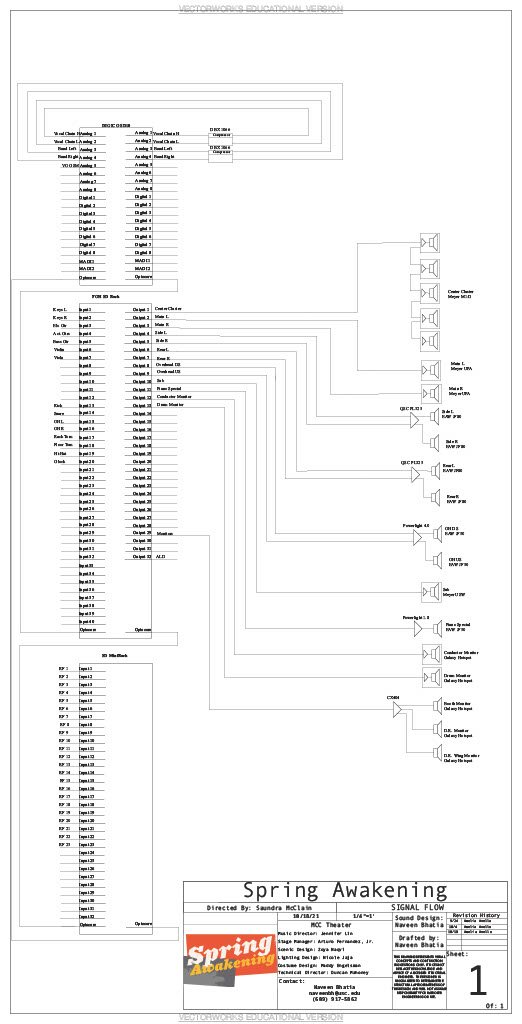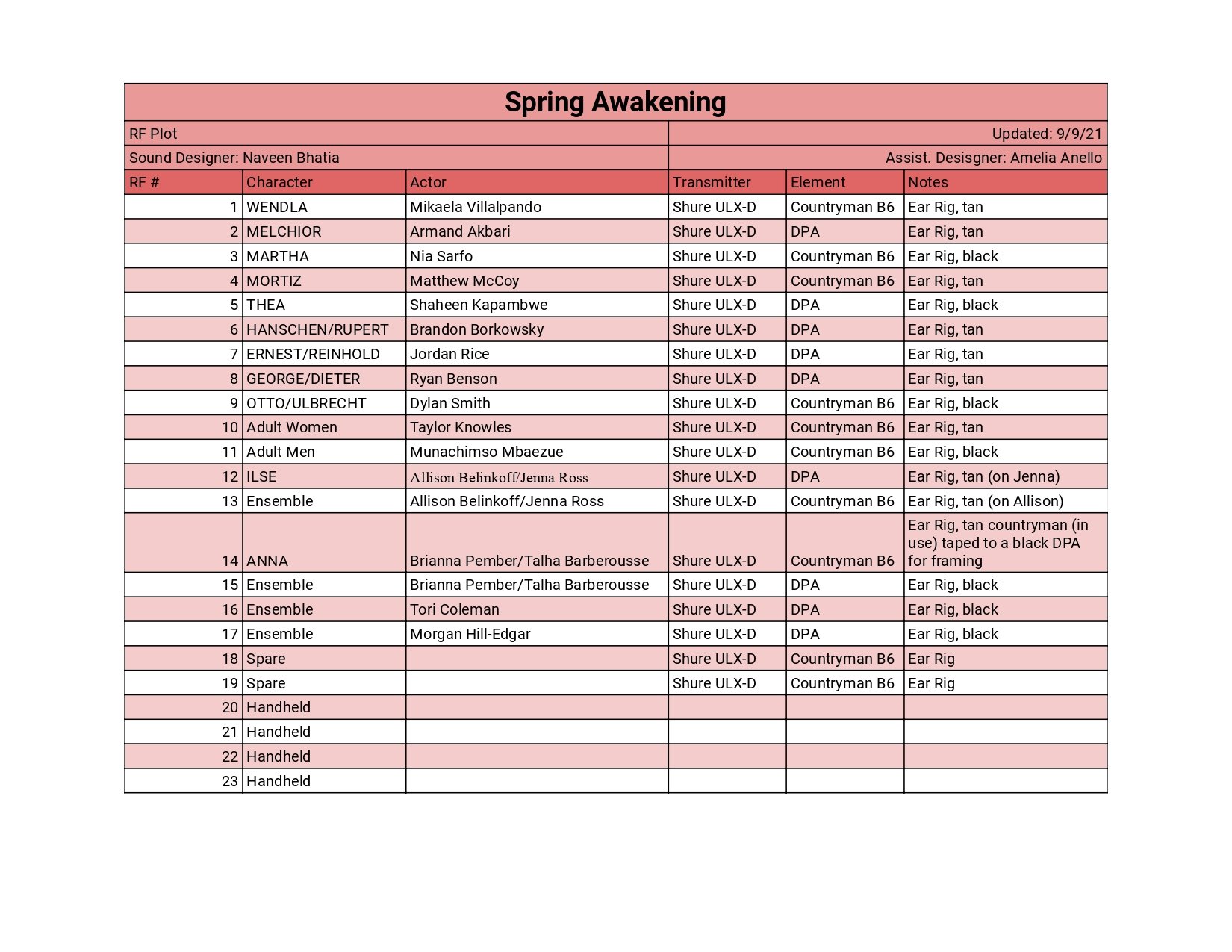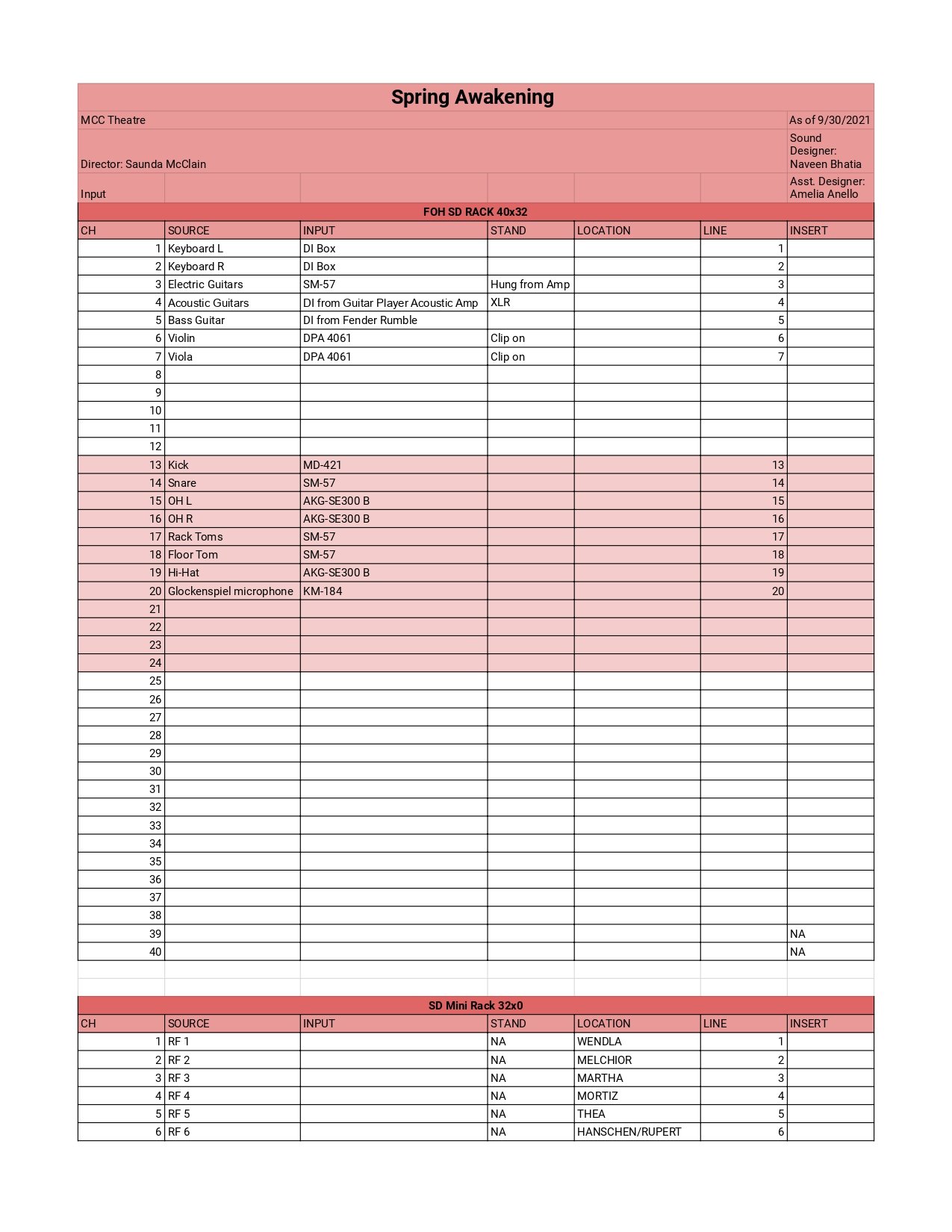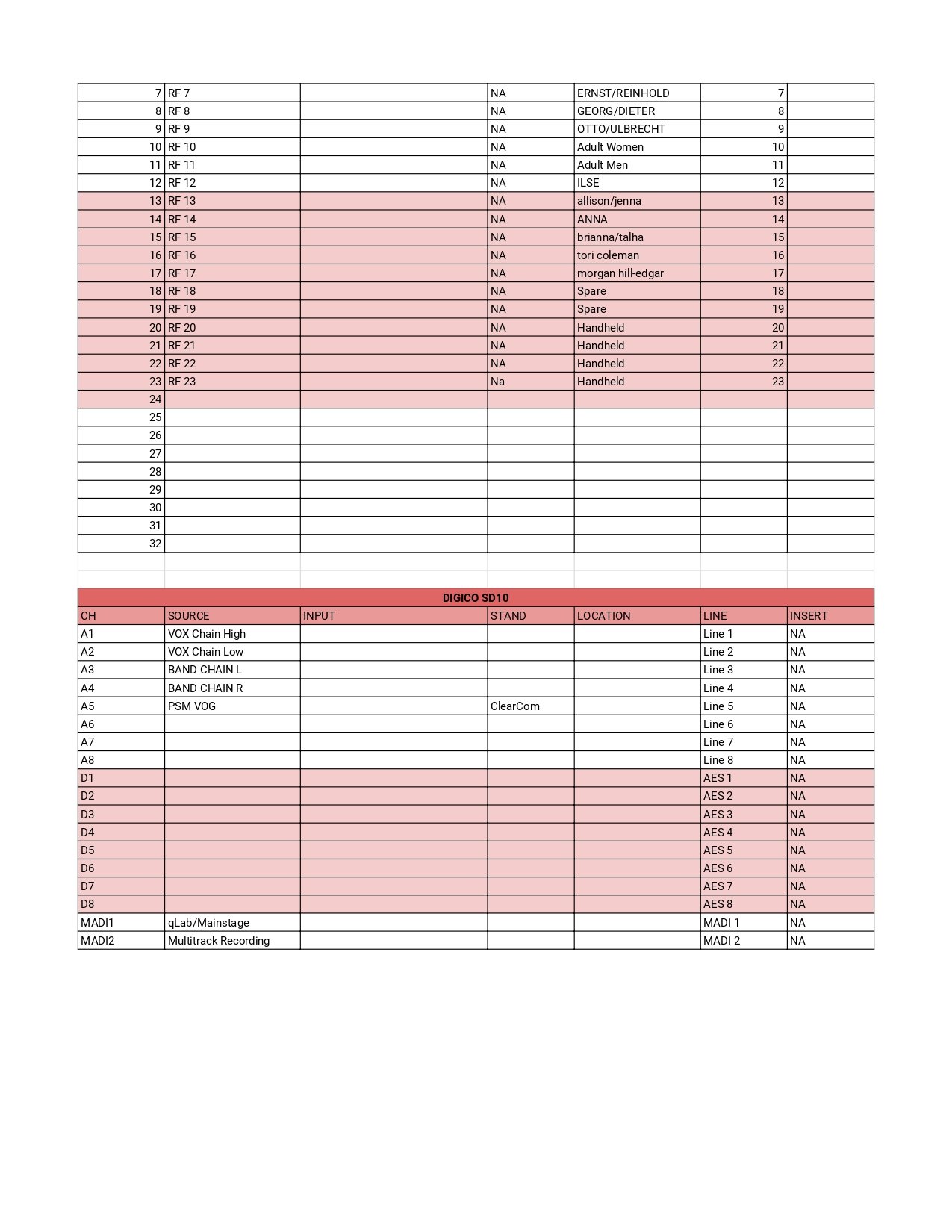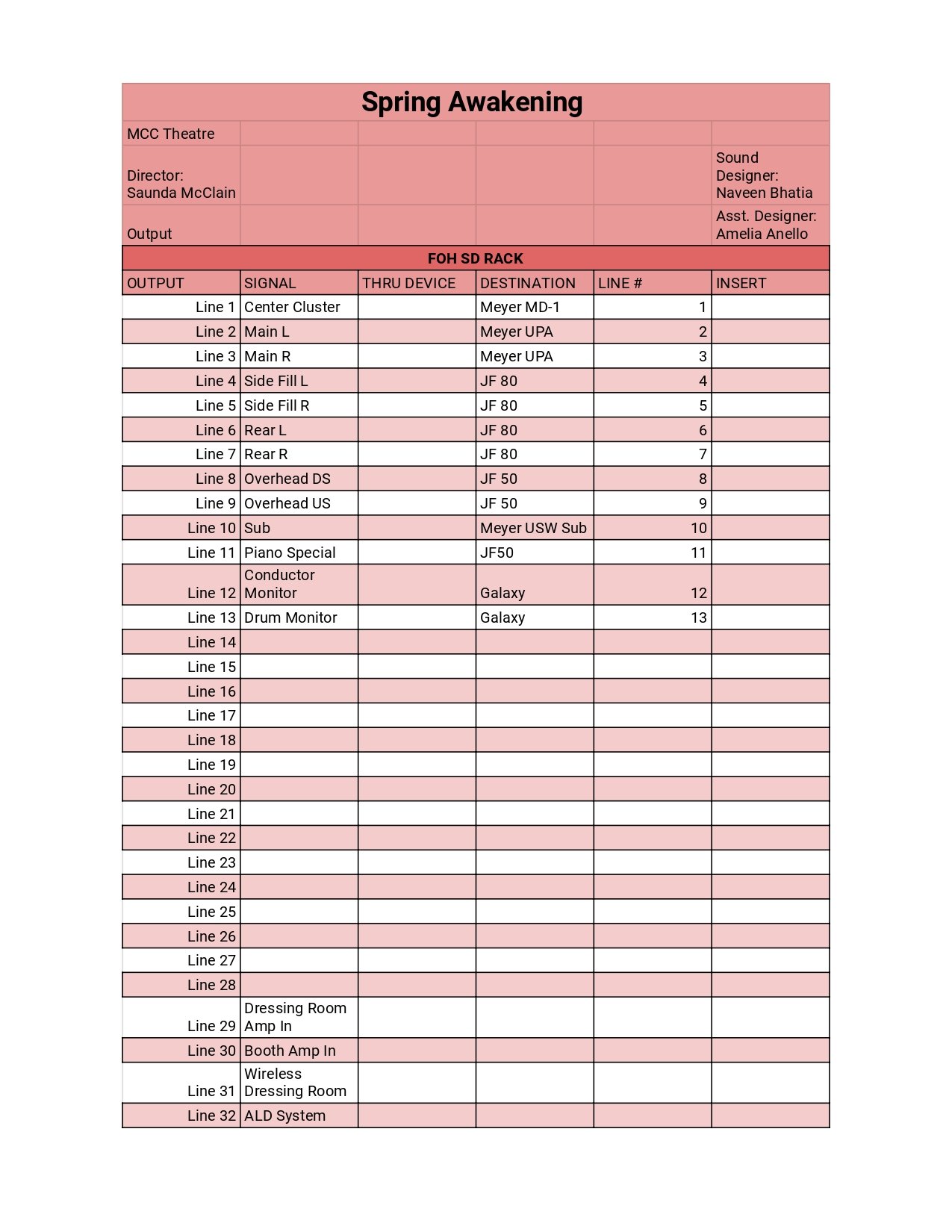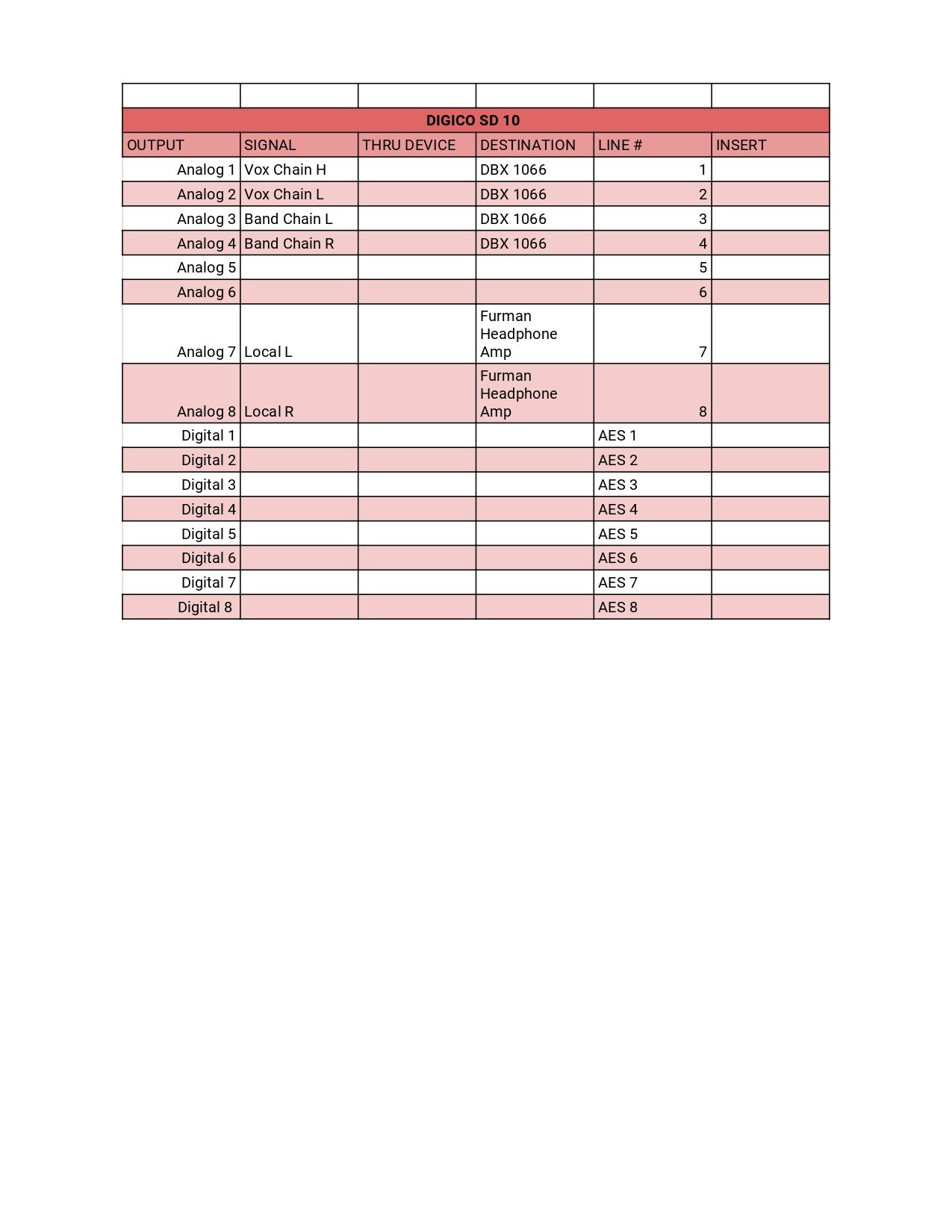Spring Awakening
Fall 2021
Director: Saundra McClain
Choreographer: Lisa Ruffin
Scenic Design: Zoya Naqvi
Costume Design: Maddy Engelsman
Lighting Design: Nicole Jaja
Sound Design: Naveen Bhatia
Associate Sound Designer: Amelia Anello
Production Engineer: Alex Attalla
A2: Ari Hyman and Tyler Giffin
The concept for Spring Awakening’s sound design was trying to evoke the feeling of your head spinning - spinning with trauma, sexual frustration, love, angst, and depression. Materializing that into the sound design, we leaned towards heavily object oriented sound design. Though the initial concept for the show involved dynamically moving vocals and instruments using Meyer SpaceMap Go, due to various restrictions, we were unable to go through with that plan. The first, and most important, constraint, was the dynamics of the room the performance was in. The McClintock Theater is a smaller blackbox space, and actually getting enough gain on our instrument microphones to convincingly move around instruments, we would be ruining our gain before feedback for our vocal microphones. Additionally, because this production was the first musical at USC in two years due to the pandemic, and the first to want to employ object oriented design, we opted for a simpler solution. Finally, because of the COVID-19 pandemic, both myself and my mixer, Alex, were relatively inexperienced with large scale musicals, and we deemed that it would be a misallocation of time to spend time stuck behind a totally new software.
Instead, we decided to heavily utilize group swaps and various space specific reverbs. Our system effectively was a multi-channel, multi-zone system, with a main PA, side L/R, rear L/R, 2 added upstage speakers for distance and 2 overhead speakers for an omnipresent teacher voice. For each pair of speakers, main L/R, side L/R, and rear L/R, we had stereo vocal groups that we could switch between, out of our standard Center Cluster/Mains setup.
This posed two important questions: how do we decide what moments we want to distribute vocals through the house, and how do we time the moves so that it is unnoticeable to the audience? To answer both of these questions, I went through the script marking every moment that felt one or more of the players was going through a head spinning moment - for example in “The Dark I Know Well” when Ilse talks about her sexual abuse, or in “Touch Me” when we learn about the boys’ budding sexual awakening. We used the scores heavily to distribute the vocals evenly, and timed each group swap cue with a breath or rest.
The final result was stunning. We were able to balance the band in the room, while still adding them into the system to build a mix, and created space for the vocals in the mix both in volume and physical position. The concept also held up dramaturgically, and sonically, as the pop score allowed for heavy manipulation for the audio. Listen to a rough, unmastered remix of “Touch Me”.
In addition to moving vocals through the system, we used various effects to display growing tension and resolution throughout the show. For example, when Moritz decides to commit suicide in the first act, he is surround by ensemble members who are aggressively singing at him. To drive home the internal anguish he was going through, we ran the ensemble members through a heavily compressed telephone filter, which subtly allowed us to add edge and heat to that moment sonically.
In doing this show, I learned heavily about objected oriented sound design, effects manipulation, and band reinforcement. I also learned the fundamentals of musical theatre sound design in practice - everybody needs to be able to hear, and that has to come first, paperwork has to be detailed and without errors (thank you Stephen Jensen, USC SDA’s Sound Supervisor, for guiding me through that process), and at the end of the day, communication is key. Coming out of this production, I resolved to have more control of the band, and more ability to set them back in the mix. See Godspell for more information on that.

